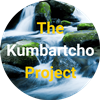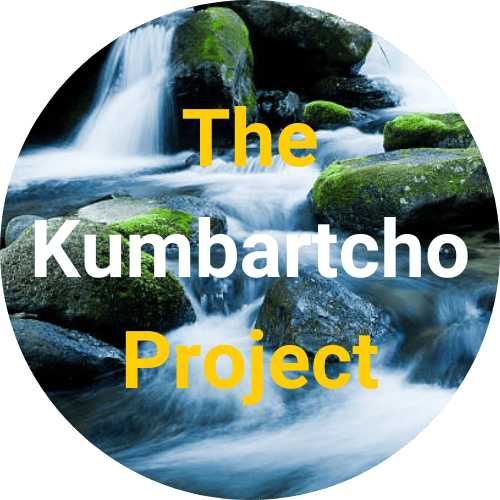Something I’ve Been Meaning to do
I’ve always wanted to make a continuous compost pile. When a friend contacted me and asked if I wanted some feral chooks, I thought this is perfect. All I had to do was round them up and create a chicken hotel. There were nine chickens including Henry, who didn’t last long before turning into Chicken Kiev. You could hear him up and down the valley all night. Neighbours weren’t impressed.
We set a date for Saturday 13 January for the Composting Workshop, and I had a number of tasks to complete. Apart from the food and drinks for the day, I had to make some chicken living quarters.

Composting Technique 1.
The real workers at the compost heap!
Start date 18 December 2023, compost heap made 13 January 2024.
Wood chip, grass hay, charcoal, clay, cow dung, chicken poo, Biodynamic Australian Environmental Activator, Biodynamic compost preparations, basalt dust, borax, sulphur, green grass.
All the ingredients have been added since the chooks were introduced to the shade tunnel.
Next door to this tunnel shade house is their green grass area, also in a tunnel.
Nine feral hens, and Henry Chicken Kiev (the rooster hated by many because of his all night crowing habit!)
This is a hot static pile compost which will be ready in 6 to 12 months.
I’ll keep putting feedstock in for the next compost heap, and the next etc.
Below is the grass tunnel for the chickens. They mainly stay in the other tunnel now that the ingredients are all there. I had to cut a walk through as they only visit this one for a short while eating some of the grass and then shoot back through to the compost tunnel.

At a Compost Workshop, the First Question is What Is Your Context?
I ask all of our workshop participants at the start of all the workshops, what is your context? Meaning, in the case of compost, what sort of compost do you want to make and how much work do you want to do making it? If I don’t do this then I can be working with people and showing them something that doesn’t suit. Not everyone has 100 hectares and the need for tonnes of compost.
It helps everyone if I know whether people want a quick compost and they are willing to turn it every day. Or is it better to have a slow compost with different ingredients that break the inputs down over a longer period and not worry about turning. To solve this conundrum, we have a look at smaller easy ways to make compost.
The other aspect of context is about capability for the task! It’s easy to build compost heaps with a team of WWOOFER’s, or with machinery, however many don’t have either of these luxuries!
Composting Technique 2.
Biodynamic Australian Environmental Activator pit.
In my opinion, this is the Rolls Royce of composting techniques. It is still a little bit labour intensive and you do need fresh cow manure. Bagged cow manure from Bunnings or produce, and agricultural stores is not suitable.
Well where can I get fresh cow manure, I hear you ask. Have I got a deal for you. There are a couple of ways to access the ingredients to make a Biodynamic Australian Environmental Activator pit.

a. Contact me, Shane on 0428 931 880 and organize for yourself and family and friends to visit Kumbartcho Farm. Create a pit on site and combine all the additives in the big shed and then place the resultant product in the pit.
I have a number of people who have pits at the farm, which they visit from time to time to take some and make more to add to the pit. All the ingredients are available at Kumbartcho Farm.
b. Organize a group in your local community, & together make your own pit that can be shared. Just make sure one of your group has access to fresh cow manure and a trailer or ute to get the manure.
Other Ingredients Needed for Biodynamic Pit Compost
Biodynamic Australian Environmental Activator, requires the following ingredients;
A wheelbarrow load of fresh cow manure, a shovel full of Biodynamic horn manure, a little Biodynamic horn silica, horn clay, crushed egg shells, basalt dust (or some local rock dust). I used sandstone from in the caves when at Dukes Plain!
I like to add some clay from the farm as well. Clay is the medium that holds fertility. think clay colloids. Think Frazer Island (Kagari now), & the pure sand which holds no fertility. The fertility is in the vegetation cycle. Our compost has no vegetation in it, so requires clay to hold the fertility.
I also like to add some liquid Aloe Vera & Casuarina ferment to bolster the fungal network.
Then there’s trace elements like sulphur, & boron. Kinda like a turbo charger on what may be lacking in your soils. I tend to focus on sulphur, silica, & boron, as these are the first to leach out when we get rain.
The other element we can play with is Calcium, as in Hugh Lovel’s Quantum Agriculture, calcium is the TRUCK that picks up all the other minerals in the Biochemical sequence
Finally there’s the 6 Biodynamic compost preparations.
In time I will have these products available on the website. If you are thinking of getting a group together, contact me and I will make an additive batch for you. Probably around $40. Bear in mind that the end product from the pit will be enough for 400 hectares or 1000 acres.
Once your product has been in the pit for more than four months, you can start using it. You stir 75 grammes of the pit activator in a bucket for around 20 minutes then dilute it, & go spray it out.
75 grammes in 35 litres of water is enough for 1 hectare!
Short Recipe
1 wheel barrow of fresh cow dung, & additives mixed, then put in pit for 4 months.
This the Tesla (Rolls Royce) of compost.
Requires 75 grammes per hectare.
This pit is enough for 1000 acres!
Cardbord Composting 3.
Cardboard is laid on ground, and covered with dry grass, or lawn clippings.
Into this I plant sweet potato runners, Queensland arrowroot, and cassava (root vegetables).
This is a low input, low labour, recycling compost option.


RK and Hay Bale Compost 4.
The drum is a liquid brew. Any animal carcasses or cow, chicken, or manure.
Add the biodynamic compost preparations, and allow to digest for 6 months or more.
Then dilute 10 to 1, & water onto plants (foliar) or to soil to feed soil biology.
Can also be used for comfrey. Just add comfrey leaves every time they are big enough. You don’t even need to cut out the top, just use a siphon hose. Push all the comfrey leaves to the bottom with a big stick or broom handle and siphon off the top into a bucket or watering can.


Hay bale on end (to allow rain to soak in). I leave these to do their own breakdown thing over time. Preferably place high in the landscape. Gravity will move the fertility down over time.
For smaller areas, get some small bales from the produce store. Turn them on their sides for water infiltration. It also leaves the hay bale twine exposed.
Cut of dig out 6 or so holes in the top, after placing on its side. Add compost to the holes and plant seedlings into it. Water well and it will last the length of time for your plants to grow. Over the 4 – 6 months of growing the haybale will be breaking down and supplying nutrients to the plants.
Compost Longer With Minimal Effort
You may have learned by now, that my dealings with compost are based on minimal effort and Mother Nature doing all the work.
I might have to water from time to time, but that can usually be fixed by getting some polypipe and a timer for the tap and set it to water once a day for a minute or two. Works fine with worm beds. But that’s another story for a future blog post.
WATER
I’m now in a space (post Mark Shepard, & Restoration Agriculture) where the very first thing that requires attention is the water in our landscape (farm or garden).
Often people want to make or buy-in compost, & other fertility inputs, while what we actually require is WATER, and PLANTS, to get the system started.
Where there’s water there’s life.
Once we have attended to the water, then the plants will manage the water, & fertility.
Our role is to conduct the orchestra…manage both water, & plants.
Think chop & drop!
Then we have composting as nature does it!
Thanks for reading. Best regards… Shane



